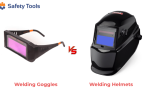A helmet of any kind is designed to give protection from injuries and save lives. Bike helmets are intended for one significant impact while skate helmets are designed for multiple collisions and falls.
Let’s see how exactly they differ and what you should know about these two common types of helmets.
The Differences Between Bike Helmet and Skate Helmet
1. Style
Bike helmet
There are many different styles of bike helmets for you to choose from. The right one depends on what you need it for. Bike helmets are used for commuting, triathlons, BMX, Road, Mountain, and helmets for kids.
Skate helmet
Many people find the skate helmet to be sleeker, more streetwear, and youthful than the bike helmet. People who use this type of helmet include skateboarders, casual cyclists, mountain bikers, and commuters. Some even prefer it for inline skating and snowboarding.
2. Visors
Bike helmet
A road cyclist doesn’t need a visor for their helmet. They opt to wear sunglasses to protect their eyes. A helmet with a visor is advisable if you are into downhill, mountain, and trail riding.
It gives additional protection for your face from the elements, including the sun, rain, wind, bugs, and mud splatter.
Skate helmet
Typically, skate helmets do not have visors. Some manufacturers, however, build small ones into their helmets. Skateboarding usually takes place in a controlled environment, where they don’t have to face the elements.
3. Head coverage
Bike helmet
One of the distinct differences between bike and skate helmets is their shape. Road helmets don’t usually cover the lower back of the head since riders typically fall forward during a crash and not backward.
However, there is an exception with BMX and mountain helmets as they cover the entire face and back of the head. Cyclists who participate in these activities move at high speeds over rough terrain. The helmet requires more protection because the rider can fall in any direction.
Skate helmet
Skate helmets also cover the back of the head. Skateboarders need this added protection because they are likely to crash off their board in all directions, including falling backward.
4. Foam protection
Bike helmet
Most manufacturers like to use Expanded Polystyrene Foam (EPS) for their helmets. It does well in severe impacts and is easy to ventilate, cheap, light, and durable.
Skate helmet
The foam liner protection in a skate helmet is mainly made from foam rubber (EVA). These helmets are meant to be used for multiple impacts, but remember that the foam compresses and will protect you less the more you wear it.
5.Outer material
Bike helmet
Bike helmets are usually constructed in three parts – a solid outer shell, a thin lining, and a strap. The helmet’s exterior is often made of Kevlar or polycarbonate for enhanced durability.
Skate helmet
Skate helmets need to keep up with the user. Thick, hard outer shells are required and are made from ABS plastic, composite carbon fiber, fiberglass, or Kevlar.
6. Single vs multiple impacts
Bike helmet
A bike helmet is designed to protect you from injury and harm. It’s suitable for one single impact. After that, you should replace your helmet.
Skate helmet
A skate helmet can protect you from multiple impacts before losing its capability to keep you safe. This is good because skateboarders can fall and crash numerous times.
7. Vents
Bike helmet
Vents are an essential feature when looking at bike helmets. There are front and back vents on a bike helmet. They aid in helping to keep the head cool. As you ride, air will flow through the vents.
Skate helmet
Skate helmets can have vents as well. They are usually smaller, and air doesn’t flow as easily as they do in a bike helmet.
8. New technology
Bike helmet
WaveCel is a development released by Trek Bikes to help reduces rotational forces. These forces are what cause concussions.
WaveCel has gone on the record to say that it absorbs over 70% more rotational energy than the usual helmet lining.
Skate helmet
The Sweatsaver invention does precisely what its name implies. It keeps the wearer more comfortable while being protected.
The Sweatsaver helmet is also Tony Hawk approved! You can’t beat that type of endorsement for a bike helmet.
9. Durability
Bike helmet
It’s hard to judge a bike helmet and a skate helmet in this category. Bike helmets are intended for one impact only. When there is a collision, the foam compresses the helmet to save the rider from injury.
After this happens, you need to replace your helmet. Other factors to consider are wear and tear and exposure to direct sunlight and heat.
Skate helmet
It’s advised to replace your helmet every five years or so. The plastic used in the helmet can become dry and breakable. If you are involved with a fall, you should always check over your helmet.
If it has obvious trauma, it would be time to replace it. The more the helmet is used, the less it will protect you.
Other signs to check are bumps, scrapes, and cracking on the inner and outer shell of the helmet and straps or buckles not working correctly.
Why is certification important when it comes to helmets?
Certifications help avoid severe fractures and head and brain injuries. Bike helmets that have been manufactured after 1999 have to meet the Consumer Product Safety Commission standard.
A certified bike or skate helmet can’t guarantee that you won’t injure yourself, but they are high quality and give you a better chance of avoiding dangerous and severe head injuries.
Can you wear the same helmet for skating and bicycling?
Safety, functionality, and certification are things you need to consider when buying a helmet. The type will depend on what activity you need it for.
As discussed previously, bike helmets are usually designed for one high-impact accident. The skate helmet is built to endure more impacts and falls because skateboarders and their tricks tend to fail from time to time.
Bike helmet safety tips
- Always check over your helmet and equipment
- Avoid riding at night
- Make sure your helmet fits properly
- Watch out and be seen
- Be careful of road hazards
Skate helmet safety tips
- Wear wrist, elbow, and knee pads for added protection
- Mouthguards are an excellent option to protect your teeth
- Your helmet needs to fit correctly
- Always check over your gear
FAQs
1. What safety info should I look for when purchasing a helmet?
Ans. There will be a sticker inside the bike or skate helmet from the Consumer Product Safety Committee (CPSC). This establishes that the helmet is high quality and will protect you from a high-level impact.
2. How do I prevent my strap from creeping up?
Ans. Sometimes after one ride or skate, the straps on your helmet will loosen and creep up. You can avoid this by not using skinny straps but the standard width ones.










Leave a Comment